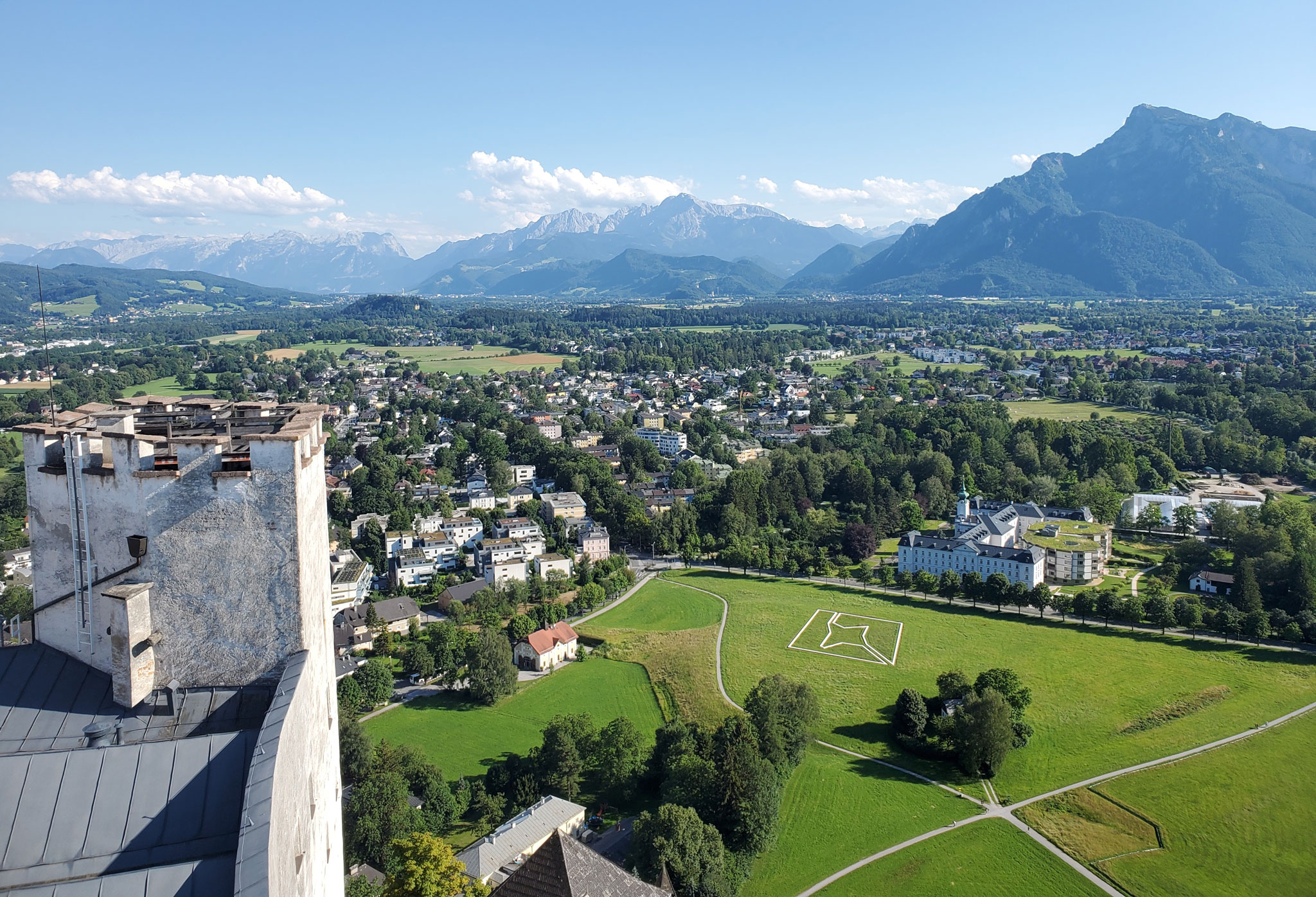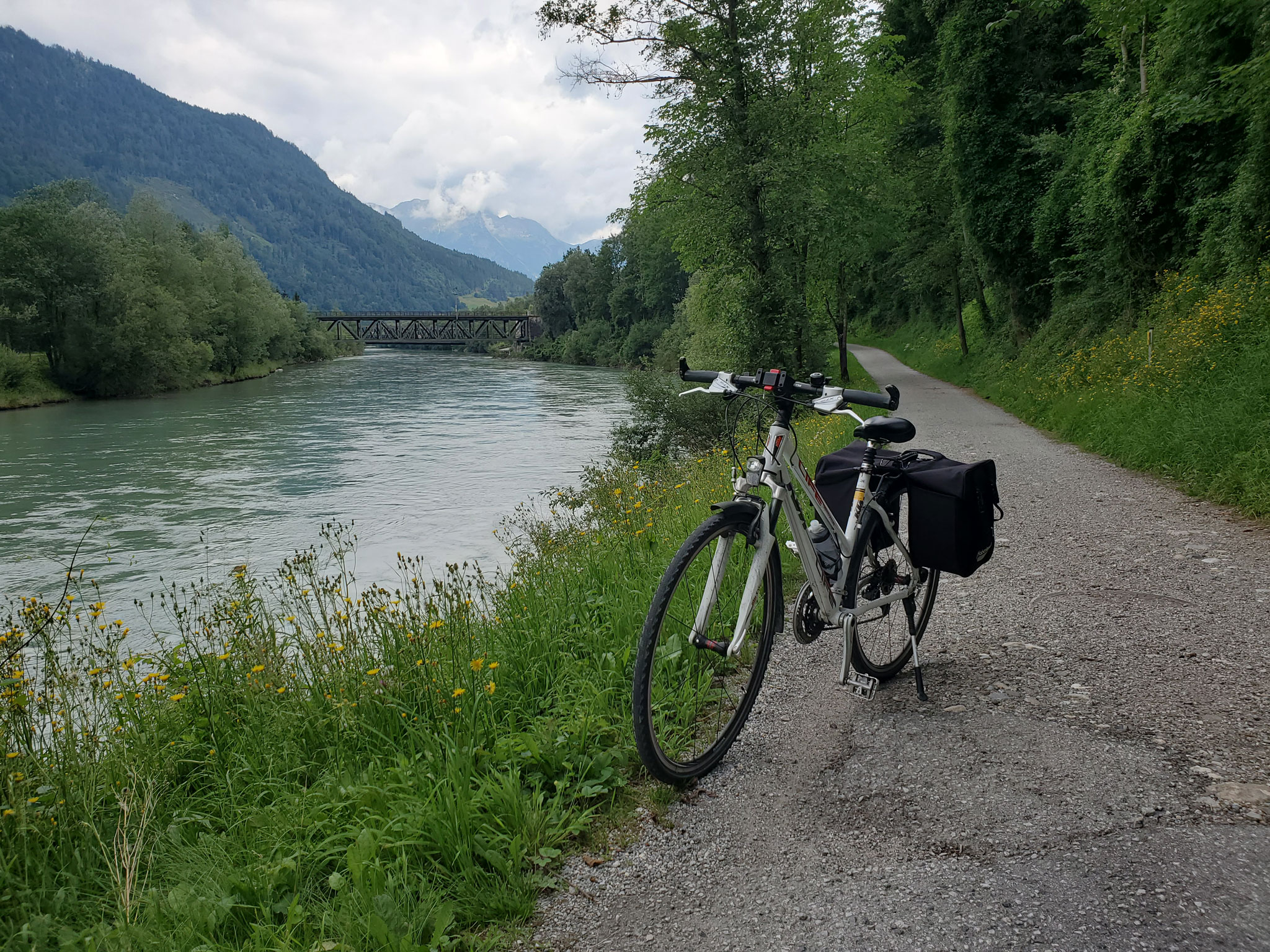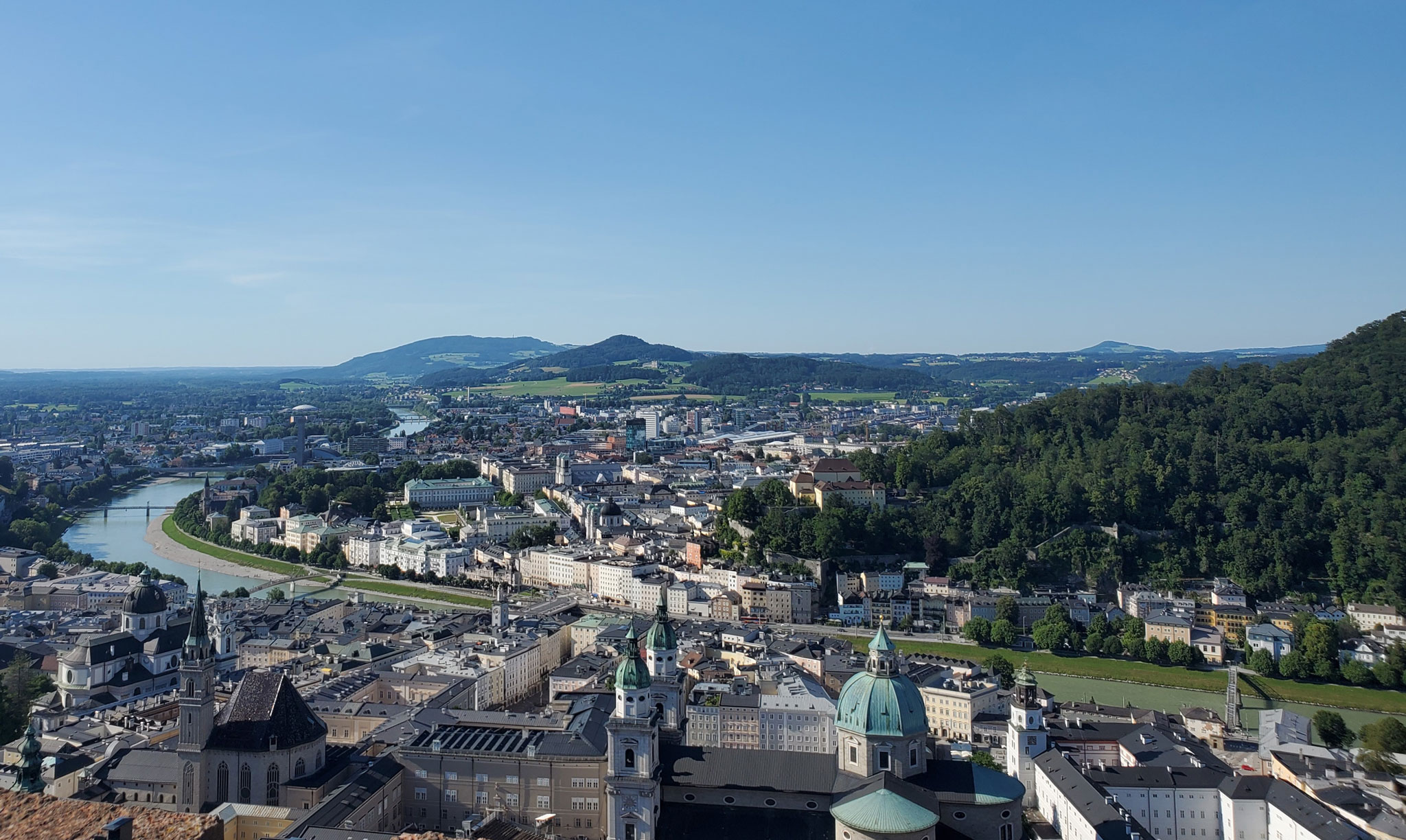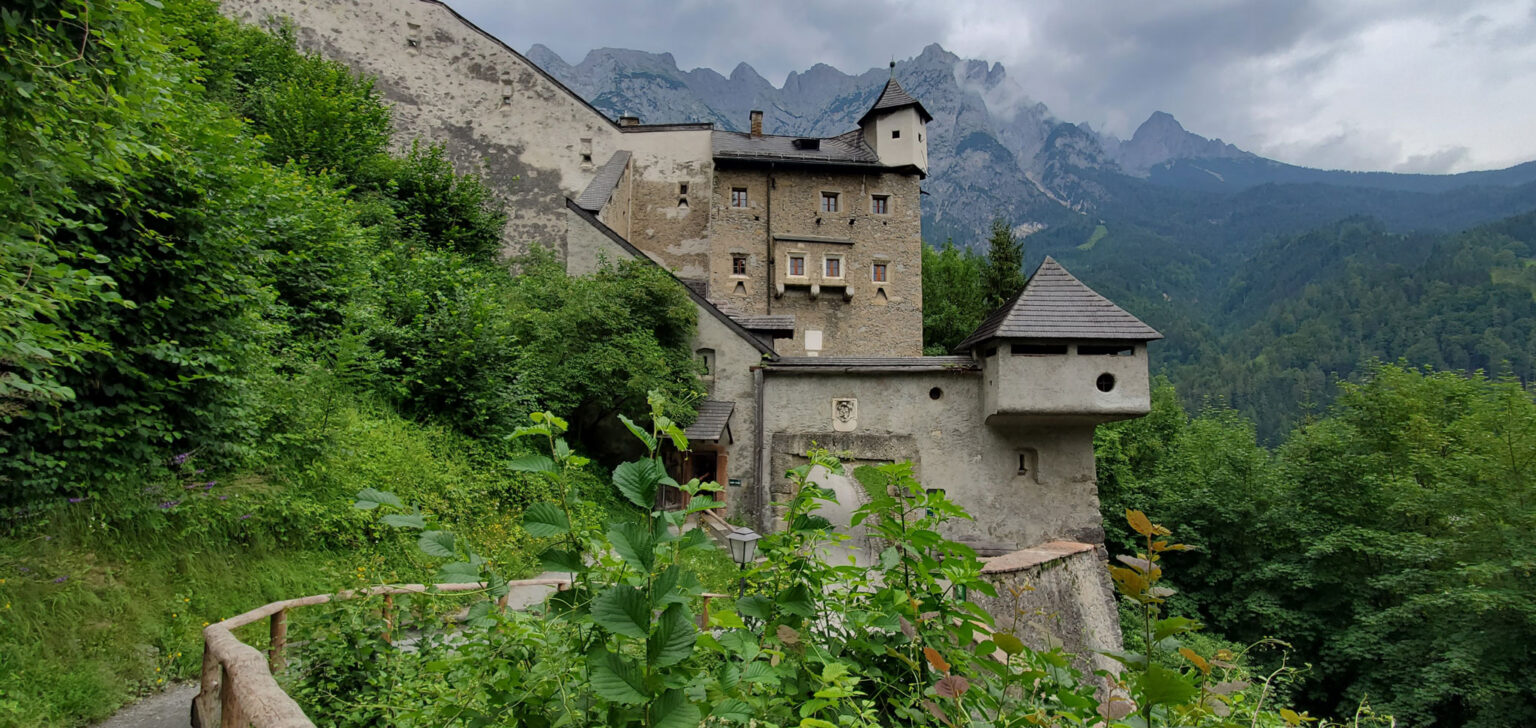After leading a group on a hiking tour in Italy’s Dolomites, I bid my hiking group adieu in Munich and hopped the train to Salzburg, Austria, my launching point for a solo, self-guided cycling trip along the Salzach River.
I enjoyed the afternoon in Mozart’s birthplace, exploring the many shops tucked into the cobbled street corridors of the Alstadt, or Old Town, and hiked up the steep hillside to Hohensalzburg, the 11th-century castle complex that looms above Salzburg. The fortification provided outstanding views of the city and the Alps to the south. I gazed south toward the Grossglockner, Austria’s highest peak, and reveled in the notion that I would be cycling in the valley below this massif in a few days.
Next morning, I located the shop where I had a bicycle, helmet, panniers and repair kit reserved. I rode my hired wheels to the train station and embarked on a two-hour-long ride to Zell am See, a picturesque lakeside town southwest of Salzburg.

There were a few other cyclists in my train car, and I overheard their banter in German. Thanks to my mediocre German skills and universal words such as ‘kaput,’ I deduced the train track for tomorrow’s journey had washed away, and I needed to secure a ticket for a special cyclists’ bus.
Arriving in Zell am See, I headed straight to the ticket counter and purchased the last remaining ticket for the morning’s cyclists’ bus to Krimml Falls, the start of my cycling journey. Next, I checked into the hotel I would occupy for two nights and set out to cycle around Lake Zell, or Zeller See. Bustling with tourists, Zell am See is popular with tourists from the Middle East, specifically the Persian Gulf. So much so that it is common to see signage in Arabic script in addition to German, which was unexpected.
With many other cyclists, I boarded the first morning’s train bound for Krimml. The forecast called for heavy rains all day, but so far, so good. The train stopped just shy of where the track washed out. Passengers boarded a bus while a crew loaded their bikes on trailers, and both were reunited in Krimml.

I rode a washboard-and pothole-laden track to Krimml Waterfalls, the largest in Austria and the tallest year-round falls in Europe. After viewing the falls, I cruised back down the hill toward Krimml and began my multi-day return to Salzburg. Just then, it started to rain. I ducked into a covered wooden bus stop, had a snack and weighed my options. The skies opened within seconds, and rain began pouring down. I waited 10 minutes and realized the ominous forecast was correct. I donned an extra layer for warmth, then put on my rain shell and pack cover before braving the rain. Enormous raindrops were hitting the ground with such momentum they bounced a foot high off the pavement; the deluge was invigorating!
I rode from village to village through the Pinzgau region, following the well-marked cycle path along the Salzach River through lush meadows full of grazing cattle. The clouds parted briefly, just enough for me to sneak a peek at the Grossglockner towering above me at 3,797 meters (12,457 feet). It was therapeutic to not have anything to think about but pedaling. After 50 miles, I returned to Zell am See, drenched. I stowed my bike in the gear room, took my panniers and backpack to my room to dry, then ducked out for dinner with the novel I was enjoying in hand.
I left the Zell am See/Kaprun resort area the next morning and headed continued along the Salzach River. Once in Taxenbach, I rode both brake levers down the extremely steep hill to the entrance of the Kitzlocklamm. The Klamm is a narrow canyon carved by the river with numerous thunderous waterfalls, cliffs, and stairsteps carved into the rock for viewing the raging river careening through the gorge. The Klamm was a worthy detour, despite having to push my bike back up that beast of a hill.
[adrotategroup=“1”]

That afternoon I continued cycling east to Lend, where the valley narrowed, and the trail veered away from the river and headed steeply up, then steeply down to Schwarzach. Leaving Lend, the path became incredibly steep. Hauling panniers and a backpack, I had no choice but to push my clunky rental bike up the most vertical part of the hill. An old man on a bike stopped me and said in German, “the bike path is down there (pointing to the river below). This way is too steep. You have no power (pointing to where the battery pack would reside if my bike were an E-bike).” After our chat, I continued via the hillier route and the man shook his head in mock protest while giving me a wink.
This undulating portion of the route was lovely. It wound up, then sharply down, through farms and pastures to the town of Schwarzach, where I strayed from the path to ride up the hill into town for a well-earned beer.
I stopped for the evening in Bischofshofen, home to the year-round ski jump famed as the finale to the annual Four Hills ski jumping tournament. The massive ski jump, visible from town, beckoned me so I set out on foot to investigate. From the base of the jump, I heard sprinklers come on and briefly wondered why they were watering the jump’s AstroTurf. Then I looked up and saw a ski jumper launch and watched him sail overhead. Not having anywhere in particular to be, I ordered a Pilsner at the hut adjacent to the jump and must have watched 40 more jumps that afternoon.
The next day, I cycled to Werfen and up the hill to the Hehenwerfen Castle, a 900-year-old fortress perched above the Salzach Valley. The castle is known for its displays of the centuries-old art of falconry.
The next portion of the route led to Pass Lueg on the only section of trail along the highway. It was nerve-wracking to ride in the howling wind and sheets of rain along the narrow shoulder. Making it to the top of the pass, I paid homage to the little church Maria Brunneck, and took a short hike to the Salzachklamm. On this gorge walk, I witnessed the tumultuous spectacle of raging water careening through narrow slits of rock from the well-engineered trail.
Cruising down the other side of Lueg Pass, I sailed through the city of Golling and followed the Salzach River through a level section of trail marked by a series of picturesque towns. In the village of Kuchl, I stopped to embrace the joyful clang of church bells from the Kuchl Parish church, founded in 1244, as I watched residents file into the church for mass wearing their traditional Austrian dress. I pedaled along the river to the town of Hallein, known for its centuries of salt extraction, where I settled in for my last night before returning to Salzburg.
I took a bus up the hillside to tour the Hallein Salt Mine in the morning. The tour required donning the obligatory white miner’s overalls before boarding the train that led deep into the mountain for a history of 2,600 years of salt mining and production.
Back in the saddle, I followed the river back to Salzburg along the now swollen and brown Salzach River. Runoff from days of rain rendered the river, now murky and muddy, full to its upper banks. With a steady headwind, I plodded along to Salzburg, where I returned my trusty bike to the shop. While enjoying a pilsner at the bustling Augustiner Bräu beer hall, I reflected on my blissful cycling adventure.
The Tauern Radweg, or cycle path, is just one of many of Europe’s well-marked cycle paths.
See you out on the trail!
Denise Lundy is a local real estate broker and second-generation leader of overseas outings. In 2023, Denise will lead a hiking group to Switzerland’s Berner Oberland. N


